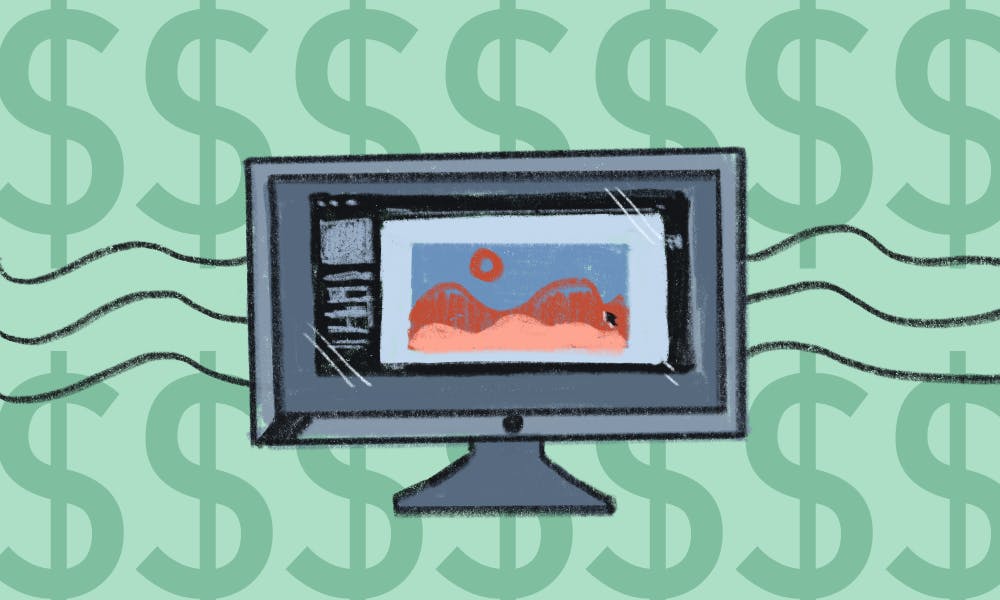On March 11 of this year, Christie’s sold a piece of artwork for $69 million. But something about this sale was special, aside from the funny number on the price tag. Botticellis, Rembrandts, and Matisses have been emptying even the fattest of wallets since the genesis of the modern art market, selling for even higher prices. These paintings differ greatly across movements and styles, yet they still have something in common that's often overlooked—they are all tangible works made from brushes, paint, and a canvas and that can hang on a wall. That’s what makes Christie’s March sale stand out. Created by digital artist Beeple, “EVERYDAYS: THE FIRST 5000 DAYS,” is a mere JPG file, and it is just one of the many forms of digital art going for millions as the NFT, or non–fungible token, market skyrockets.
The demand for digital works of art is puzzling, especially at the upper echelon of the market that sees wealthy elites dropping billions on a virtual asset. NFTs are far more than pixels, however—stored on a blockchain, a non–fungible token is a unique digital certificate that provides ownership rights for the asset that can be traded or sold. In non crypto–bro terms, an NFT is a distinctive piece of digital property. A buyer will have rights (although they may be limited) to display the digital artwork, but the purchases mostly just give bragging rights and potential resale value.
What can be called an NFT is wide reaching, including videos, tweets, and as explained earlier, artwork. By making and selling their works digitally, NFT creators can capitalize on our increasingly technology–oriented society while shaking up the global art market. “I do view this as the next chapter of art history,” said Mike Winkelmann, the man behind the artistic persona Beeple, “now there is a way to collect digital art.” NFTs have many attributes that make them the cool younger cousins of tangible art which, in the opinion of some like Beeple, is becoming passé.
The first of these benefits is knowledge of scarcity: The publicly available NFT code allows buyers to see how many copies of the digital work of art exist. Stored on a blockchain, or digital database, information about the ownership history, number of editions, minting address, and more is publicly available for all NFTs. While a physical work of art may have to be authenticated, the creator of an NFT can be found with a quick internet search, saving time and money in the transaction process. Acquiring an NFT is nothing more than a click of a few buttons. So long as you have a laptop, an NFT can provide you with a much more transparent, speedy, and accessible way to own art.
While NFTs seem like the bright and shiny future of art, they are not without detractors or downsides. Auctions may be driven by hype rather than stable market forces, leading pieces to have shaky valuations. What’s more, NFTs (and other products related to crypto-currencies) contribute to carbon dioxide emissions that are responsible for climate change. One artist even called NFTs an “ecological nightmare pyramid scheme.” One could make the argument that they're only scams that value clout over the planet. While some NFT creators, like Beeple, plan to offset emissions from their work by reinvesting a portion of profits back into protecting the earth through renewables, CO2 removal technologies, and more, it is unclear whether this will be enough to mitigate their harmful effects.
We can spend all day weighing the pros and cons of NFTs, but one thing is for certain: auction–houses, galleries, and museums alike, after selling material art for as long as they’ve existed, must now react to the growing crypto art industry. “NFT collecting has the potential to be really big,” according to Evan Beard, who runs Bank of America Private Bank's art services group. “It also has the potential to be ... a fun folly, and we’ll look back and say, ‘Can you believe we bought these digital tokens?’”







